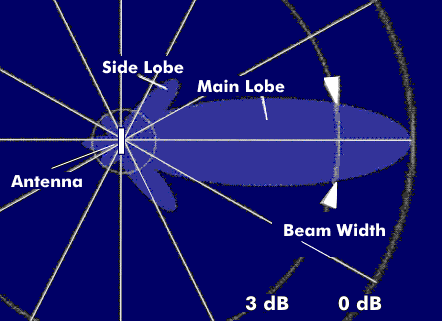beamwidth
The term beamwidth is mainly used in antenna technology, but also for the light emission of light-emitting diodes and for feeding light energy into optical waveguides. In lighting technology, the term beamwidth is often used.
- In antenna technology, the aperture angle is a parameter of antennas that directly affects the radiation characteristics. It is the angle at which the radiated power is equal to half of the maximum transmission power, or the antenna field strength has dropped by 3 dB, which is the same. This beamwidth angle is therefore also referred to as the halfwidth. In dipole and Yagi antennas, the beam angle depends on the number and arrangement of the directors. For parabolic antennas, there is a direct relationship between the diameter of the parabolic dish and the received frequency, or its wavelength. The larger the diameter, the narrower the aperture angle. A parabolic dish of 70 cm and a satellite frequency of 12 GHz, corresponding to a wavelength of 2.5 cm, results in an aperture angle of 2.5 degrees; with a 1.2 m parabolic dish, the aperture angle is reduced to 1.5 degrees.
- In LED technology, the beam angle is the radiation angle of the light-emitting diodes. Unlike incandescent lamps, light-emitting diodes are point sources with directional light emission. Due to their design, the beam angles of LEDs range from 60 ° to 170 °. Most have a beam angle of 120 °. This fact plays a decisive role in LED lighting because the radiated power, expressed by the solid angle, Steradian( sr), depends on the beam angle.

